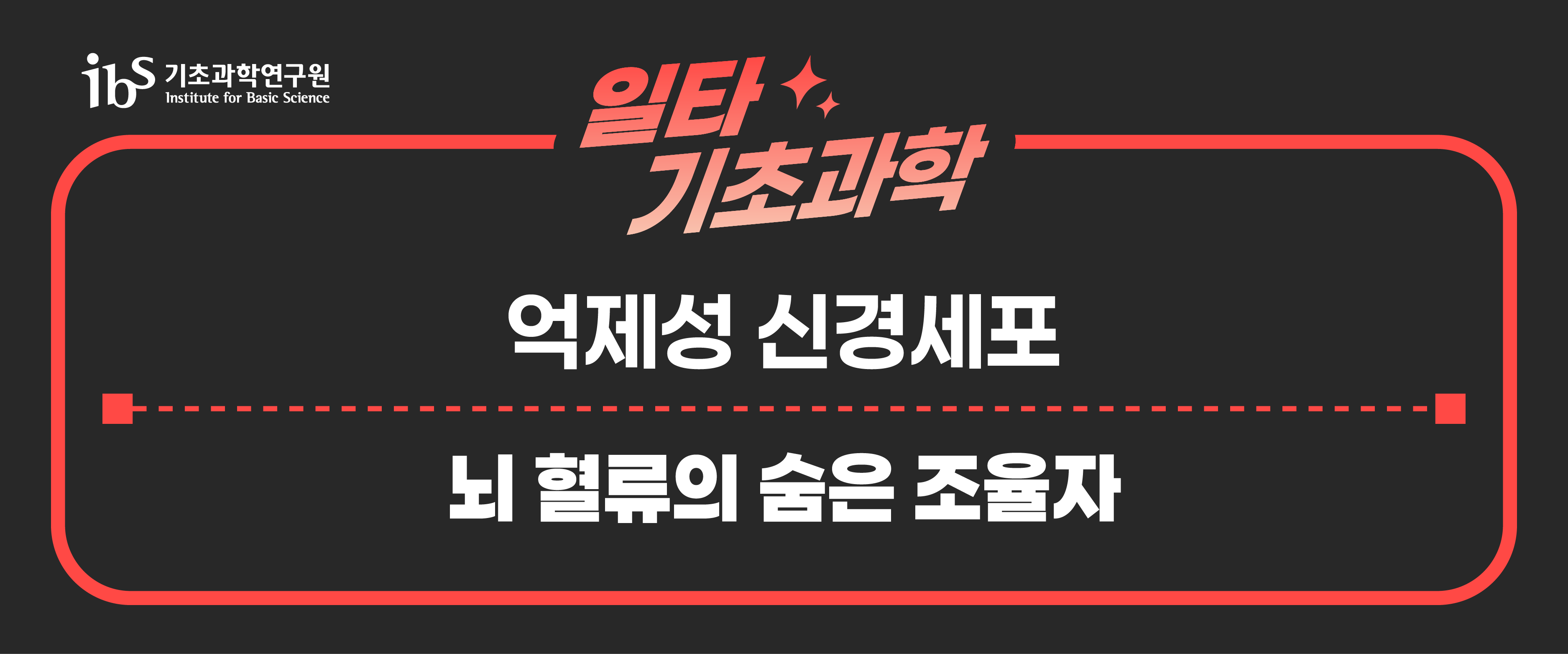주메뉴
- About IBS 연구원소개
-
Research Centers
연구단소개
- Research Outcomes
- Mathematics
- Physics
- Center for Underground Physics
- Center for Theoretical Physics of the Universe (Particle Theory and Cosmology Group)
- Center for Theoretical Physics of the Universe (Cosmology, Gravity and Astroparticle Physics Group)
- Dark Matter Axion Group
- Center for Artificial Low Dimensional Electronic Systems
- Center for Theoretical Physics of Complex Systems
- Center for Quantum Nanoscience
- Center for Exotic Nuclear Studies
- Center for Van der Waals Quantum Solids
- Center for Relativistic Laser Science
- Chemistry
- Life Sciences
- Earth Science
- Interdisciplinary
- Center for Neuroscience Imaging Research (Neuro Technology Group)
- Center for Neuroscience Imaging Research (Cognitive and Computational Neuroscience Group)
- Center for Algorithmic and Robotized Synthesis
- Center for Genome Engineering
- Center for Nanomedicine
- Center for Biomolecular and Cellular Structure
- Center for 2D Quantum Heterostructures
- Institutes
- Korea Virus Research Institute
- News Center 뉴스 센터
- Career 인재초빙
- Living in Korea IBS School-UST
- IBS School 윤리경영


주메뉴
- About IBS
-
Research Centers
- Research Outcomes
- Mathematics
- Physics
- Center for Underground Physics
- Center for Theoretical Physics of the Universe (Particle Theory and Cosmology Group)
- Center for Theoretical Physics of the Universe (Cosmology, Gravity and Astroparticle Physics Group)
- Dark Matter Axion Group
- Center for Artificial Low Dimensional Electronic Systems
- Center for Theoretical Physics of Complex Systems
- Center for Quantum Nanoscience
- Center for Exotic Nuclear Studies
- Center for Van der Waals Quantum Solids
- Center for Relativistic Laser Science
- Chemistry
- Life Sciences
- Earth Science
- Interdisciplinary
- Center for Neuroscience Imaging Research (Neuro Technology Group)
- Center for Neuroscience Imaging Research (Cognitive and Computational Neuroscience Group)
- Center for Algorithmic and Robotized Synthesis
- Center for Genome Engineering
- Center for Nanomedicine
- Center for Biomolecular and Cellular Structure
- Center for 2D Quantum Heterostructures
- Institutes
- Korea Virus Research Institute
- News Center
- Career
- Living in Korea
- IBS School
News Center
|
Brain Blood Flow and Neural ActivityThe brain accounts for only about 2% of body weight, but it consumes more than 20% of the body’s total energy. To meet this high energy demand, blood flow must be precisely regulated every time neural activity occurs. In other words, brain energy metabolism and blood flow changes are intrinsically interconnected, and this relationship forms a fundamental basis for maintaining brain function. Functional magnetic resonance imaging (fMRI) is a representative technique that indirectly infers brain activity by measuring subtle magnetic changes produced by alterations in blood flow within the brain. Until now, this fMRI signal has been explained mainly in terms of the actions of excitatory neurons. However, recent studies have shown that inhibitory neurons and astrocytes also contribute to neurovascular coupling (NVC) in their own ways, and that they are crucial factors in determining the precision of brain blood flow responses. Not Just Simple InhibitionInhibitory neurons make up about 20% of all neurons in the brain, and they primarily secrete the neurotransmitter γ-aminobutyric acid (GABA) to control the excessive activation of surrounding excitatory neurons. Representative types include: •Parvalbumin (PV) cells: They rapidly inhibit the cell bodies of excitatory neurons to prevent circuit overexcitation and maintain synchronization of brain rhythms (such as gamma waves). •Somatostatin (SST) cells: They regulate the dendrites of excitatory neurons and are involved in fine-tuning specific input signals. Thus, inhibitory neurons are not confined to a passive role of merely suppressing excitation, but rather function as active regulators that finely coordinate the flow of information in the brain and maintain overall circuit balance. In particular, interactions with blood vessels and astrocytes occur in this process, serving as an important pathway linking neural activity to changes in brain blood flow. Mechanisms of Inhibitory Neurons in Regulating Brain Blood FlowThe pathways through which inhibitory neurons affect brain blood flow can be divided into three major types: •Direct Pathway •Indirect Pathway •Subcircuit Inhibition Pathway In other words, inhibitory neurons possess multilayered mechanisms: they can directly dilate or constrict blood vessels, and they can also indirectly regulate blood flow responses through interactions with excitatory neurons and astrocytes. Research Findings: SST Neurons and Layer fMRIA recently published study (https://www.nature.com/articles/s41467-025-61771-5) revealed that SST neurons play a key role in shaping the precision of layer-specific vascular responses in the cerebral cortex. •When excitatory neurons were activated by sensory stimulation, SST neurons were subsequently stimulated, followed by astrocyte activation, which resulted in selective vasodilation in layer 4 of the sensory cortex, where thalamic input arrives. •When SST neurons were directly stimulated, two phases of vascular responses were confirmed. First, rapid vasodilation was induced by nitric oxide release, and then it was followed by slower but long-lasting vasodilation mediated by astrocyte activation. •Conversely, when the function of SST neurons was inhibited during sensory stimulation, a marked reduction in the spatial specificity of vascular responses observed in fMRI was found. These results indicate that the precision of vascular responses observed in layer fMRI is not merely a structural property of blood vessels, but is based on physiological mechanisms involving SST neuron–astrocyte–vessel interactions. Future Research DirectionsThis achievement goes beyond existing excitatory-neuron-centered models of brain blood flow and presents an expanded model that includes interactions among inhibitory neurons, astrocytes, and blood vessels. Based on this, researchers aim to improve the precision of interpreting brain signals by analyzing the positive and negative fMRI signal responses observed in autism, dementia, epilepsy, and other conditions from the perspective of excitatory–inhibitory balance. Furthermore, by varying stimulation frequencies or analyzing layer-specific responses in the cerebral cortex, the functional characteristics of specific neural circuits can be identified, which is expected to contribute to the development of non-invasive diagnostic tools.
[Figure] Spatial specificity of cerebrovascular responses mediated by somatostatin neurons Using ultra-high-field layer fMRI, selective vascular responses were observed in cortical layer 4, where sensory input arrives. Under normal conditions, activation of SST neurons regulates astrocytes, resulting in the precise supply of local blood flow where needed. In contrast, when the function of SST neurons was inhibited, such selective blood flow responses were markedly reduced. The schematic diagram on the right shows how the linkage of astrocyte and vascular responses differs when SST neurons are activated (top) versus inhibited (bottom). In other words, SST neuron–astrocyte–vessel interactions represent the key mechanism that forms the spatial precision of layer-specific vascular responses. |
| before |
|---|
- Content Manager
- Communications Team : Kwon Ye Seul 042-878-8237
- Last Update 2023-11-28 14:20











![[Figure] Spatial specificity of cerebrovascular responses mediated by somatostatin neurons](https://www.ibs.re.kr/dext5data/2025/09/20250918_091229965_57048.png)

